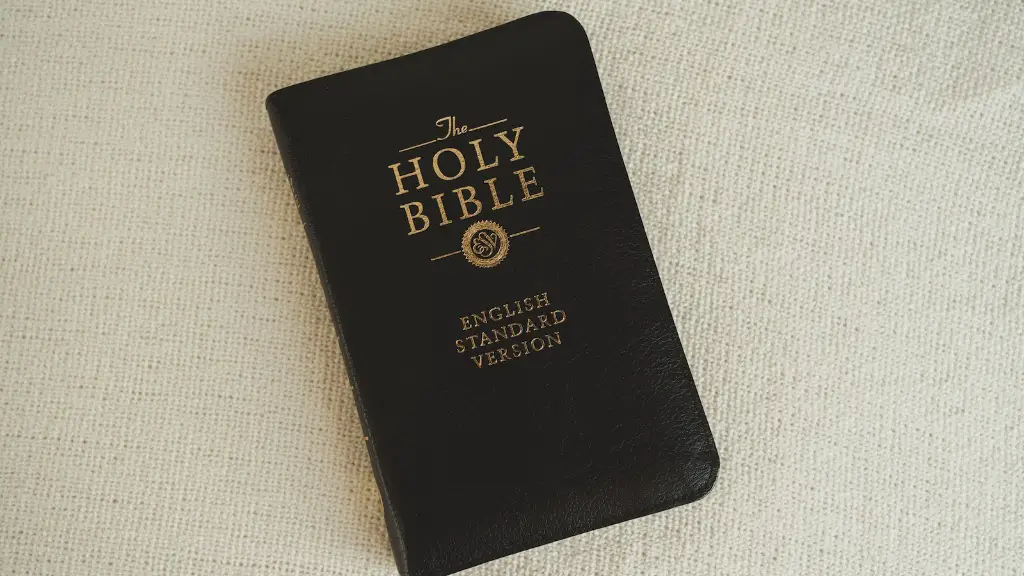The Bible does not specifically state where Tarshish is located. Some Bible scholars believe that Tarshish may have been located in modern-day Spain, while others believe it may have been located in present-day Tunisia.
According to the Bible, Tarshish was a trading colony established by the Phoenicians on the Iberian Peninsula. The colony was located near present-day Cádiz, Spain.
Is Tarshish in the Bible in Spain?
Some people believe that Paul saw Spain as the fulfillment of the reference to ‘Tarshish’ in Isaiah 66:19. However, there is no evidence in the Hebrew Bible that Tarshish is in Spain instead of in Cilicia.
There is a lot of debate surrounding the exact location of Tarshish and the isles mentioned in the Bible. Some believe that Tarshish was located in the far west of the Mediterranean sea, while others believe it was located in present-day Turkey. There is no definitive answer, but it is interesting to note that the Old Testament regularly depicts Tarshish as being in the west. This may be due to the fact that Tarshish was known for its wealth and abundance, and was therefore seen as a symbol of the west.
Where did Jonah go Tarshish
Jonah was a prophet of God who was tasked with the mission of preaching to the people of Nineveh. However, instead of completing his mission, Jonah ran away from God and headed for the city of Tarshish. Jonah eventually went down to the city of Joppa where he found a ship bound for Tarshish.
Jonah’s escape from the command to proclaim the word of God in Nineveh can be seen as an act of disobedience. Jonah is displeased with the display of divine mercy to the great heathen world, and this leads him to try and flee from his responsibilities. However, God’s plan is ultimately successful, and Jonah is forced to confront the people of Nineveh with the message he was meant to deliver. This story highlights the importance of obedience, even when we may not agree with the task at hand.
What does the name Tarshish mean in Hebrew?
Tarshish is a Sanscrit or Aryan word, meaning “the sea coast.” It is one of the “sons” of Javan (Genesis 10:4; 1 Chronicles 1:7).
Tarshish was a seaport or maritime region mentioned in the Bible. It is thought to have been located in southern Spain or western Tunisia.
What is Nineveh called today?
Nineveh was an ancient Assyrian city located in modern-day Mosul, Iraq. It was one of the largest and most affluent cities in antiquity, with a population of over 100,000 people. It was originally known as Ninua, a trade center, but became an important political and military hub during the Assyrian Empire. The city was sacked by the Babylonians in 612 BC and later by the Persians in 627 BC, but was rebuilt and flourished under the Assyrian ruler Ashurbanipal in the 7th century BC. Nineveh was again destroyed in 612 BC by the Babylonians under Nabopolassar, but was later rebuilt by the Assyrians. It was finally abandoned in 627 BC after it was sacked by the Persians under Cyrus the Great.
Tarsus was an ancient city in Cilicia, located in what is now the province of Mersin, Turkey. It was an important center of trade and culture in the region, and was the birthplace of the Apostle Paul.
At what location was Saul’s name changed to Paul
One of the most well-known name changes in the Bible is that of Saul to Paul. This change is often thought of as Saul’s conversion to Christianity, and it marks a major turning point in his life. Prior to this change, Saul was a major persecutor of Christians; after his name change, he became one of the most important figures in the early church. This change highlights the power of God to radically transform lives, and it is a reminder that even the most unlikely people can be used by God for His purposes.
The people of Nineveh were enemies of the Israelites and Jonah did not want to preach to them. So he got on a ship to sail far away from Nineveh. While Jonah was on the ship, a big storm came.
How many miles from Tarshish to Nineveh?
The Biblical story of Jonah is one of disobedience and divine intervention. Jonah was tasked with going to the city of Nineveh to warn them of God’s wrath but instead chose to go to Tarshish, which was in the opposite direction. As punishment, Jonah was swallowed by a great fish but was later spit up on dry land. The story is meant to teach about the importance of obeying God.
Nineveh was the capital of the ancient Assyrian empire, which was located in modern-day northern Iraq. This empire was one of the most powerful empires of its time, and its capital was a major center of trade and culture. The city of Nineveh was destroyed in 612 BC by a coalition of Babylonian, Median, and Persian forces, but it was later rebuilt and flourished under the rule of the Assyrian king Ashurbanipal. The city was again destroyed in 1258 AD by the Mongols, but has since been rebuilt and is now a major city in Iraqi Kurdistan.
What is Babylon called today
The ancient city of Hillah is located in the modern-day city of Hillah in Iraq. It is about 83 kilometers south of Baghdad. The city was an important center in the ancient world and was known for its grandiose buildings and temples. Today, the city is home to a number of archaeological sites that are worth visiting.
Babylon was an important city in ancient times. It was the largest city in the Babylonian empire and was founded more than 4,000 years ago. The city’s ruins are located in present-day Iraq. Babylon was an important center of trade and culture, and it is known for its impressive architecture, including the famous Hanging Gardens.
Is Nineveh and Babylon the same?
We can find an explanation in the fact that Nineveh at times was called “Old Babylon” in Assyrian sources. This might explain why the Biblical authors were obsessed with the great deportations to Babylonia under Nebuchadnezzar.
Paul was born in Tarsus and grew up in Cilicia, a region in present-day Turkey. He later lived in Damascus and Antioch, two of the most important cities in Syria. Paul was a Greek-speaking Jew, and his letters reveal a deep understanding of both Judaism and Hellenistic culture.
Conclusion
Tarshish is mentioned in the Bible as a place far off to the west, beyond the Mediterranean Sea. It is associated with the wealth and prosperity of its inhabitants. Some Bible commentators believe that Tarshish may have been located in modern-day Spain or Portugal.
There is no definitive answer to where Tarshish is in the Bible. Some believe that it is in modern day Spain, while others believe it is in modern day Turkey. The Bible does not give a specific location for Tarshish, so it is up to interpretation.






1 thought on “Where is tarshish in the bible?”